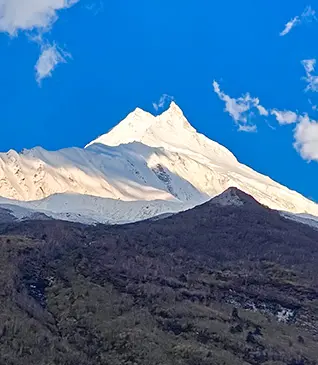Are you dreaming of planning your first Himalayan Trek? There is one place that is a dream place for every trekking enthusiast, and that is the Himalayas. It is a paradise for every trekker, filled with emerald valleys, breathtaking mountains, and beautiful trails that narrate adventurous stories at every step.
Now, while the thrill and the adrenaline of trekking through the trail of the beautiful Himalayas is unmatched, starting your trekking journey at the perfect pace, tone, and place is very important.
Choosing a perfect trekking destination to start your trekking journey is extremely essential for several reasons, such as:
- First experience always sets the tone for future journeys.
- While trekking, finding a perfect balance between challenge, adventure, and comfort is significant.
Now, 90% of the time, every first-time trekker tends to get confused about which trek to do, which one to choose from so many trek options.
So, if you are also looking into trekking and want to know more about ‘best beginners trek in the Himalayas’ or about ‘easy Himalayan treks for beginners’, we are here to guide you.
So, without any further due, let’s talk about the factors that every beginner trekker should consider before choosing their first Himalayan Trek.
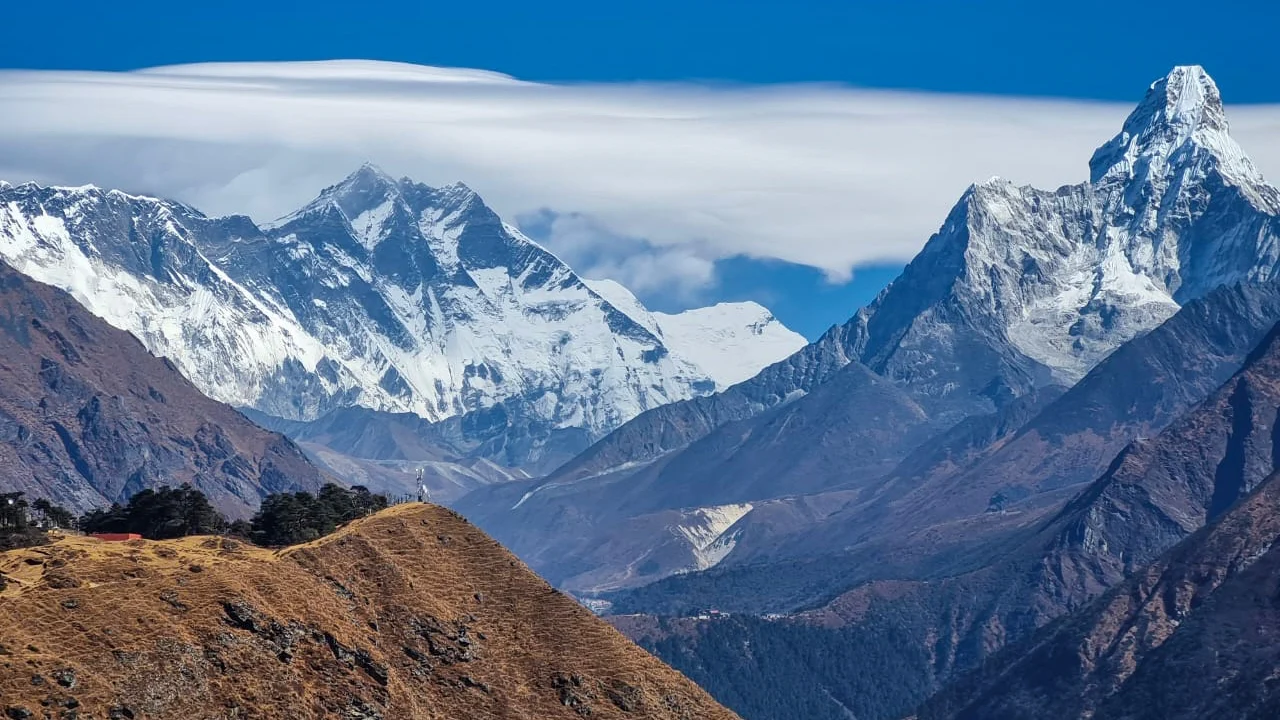
Factors to Consider Before Choosing Your First Himalayan Trek
Planning a trip is the most fun, thrilling, and chaotic task all at one time, and if it’s your first trekking trip in the mesmerizing Himalayas, then it is nothing less than a responsibility. Therefore, selecting a perfect and righteous trekking trail is very important for the trekker’s safety and enjoyment.
Some factors are very important to consider before planning your first Himalayan trek, like the fitness level of the trekker, the duration of the trek, and many more help in shaping your trekking experience in a lot of ways.
So, here are some key factors that can help you find the ‘Best Beginner Treks in the Himalayas’ and ensure your safety throughout your adventurous journey.
Fitness Level
Staying physically fit is the most crucial step for any trekker. While choosing which trek you want to experience, figuring out which one is suitable according to your fitness is necessary. For example-
- Beginner: As a beginner and with not much experience of trekking, you can choose gentle trails like Dayara Bugyal or Chopta Chandrashila.
- Moderate: Treks like Annapurna Base Camp will be suitable if you are in good health, then you will be able to handle longer hiking hours.
- Advanced: Those who are experienced in trekking can opt for challenging routes like Rupin Pass.
So, if you understand your endurance capacity, your fitness level, then you will easily be able to pick easy Himalayan treks for beginners without exhaustion.
Duration of the Trek
Your schedule is also another important factor that plays an important role in deciding which trek you are going to choose to experience first. The time you will have to spare from your busy schedule will determine whether you should go for a weekend escape or a longer journey.
Now, as for suggestions, there are two possibilities:
- Weekend Treks (2–4 days): if you are looking for a very short trip while balancing your work schedule. You can try the Nag Tibba, Chopta-Chandrashila 3 Day, or Kareri Lake. These treks are perfect for short trips for beginners.
- Long Treks (5–10 days): If you have a week or at least 5 days to spare to enjoy the beauty of nature and immerse yourself in Himalayan beauty, then you can try visiting the following treks.
Season
Weather plays a crucial role when it comes to selecting a trekking destination. Being a beginner, a trekker needs to pick a trekking spot that ensures their safety, comfort, and most of all weather doesn’t become a hurdle. So, the best time to go trekking for the first time is Spring and Autumn, as during these periods of time the weather will be moderate and you will be able to witness nature’s beauty at its best.
- Spring (March–May): It is ideal for beginners, as the temperatures will be pleasant and you will be able to witness the blooming landscapes.
- Autumn (September–November): the skies will be crystal clear, and the weather will also be stable, which makes it the best season to experience your first Himalayan trek.
Also, avoid going during peak monsoons to stay clear of slippery trails and landslides.
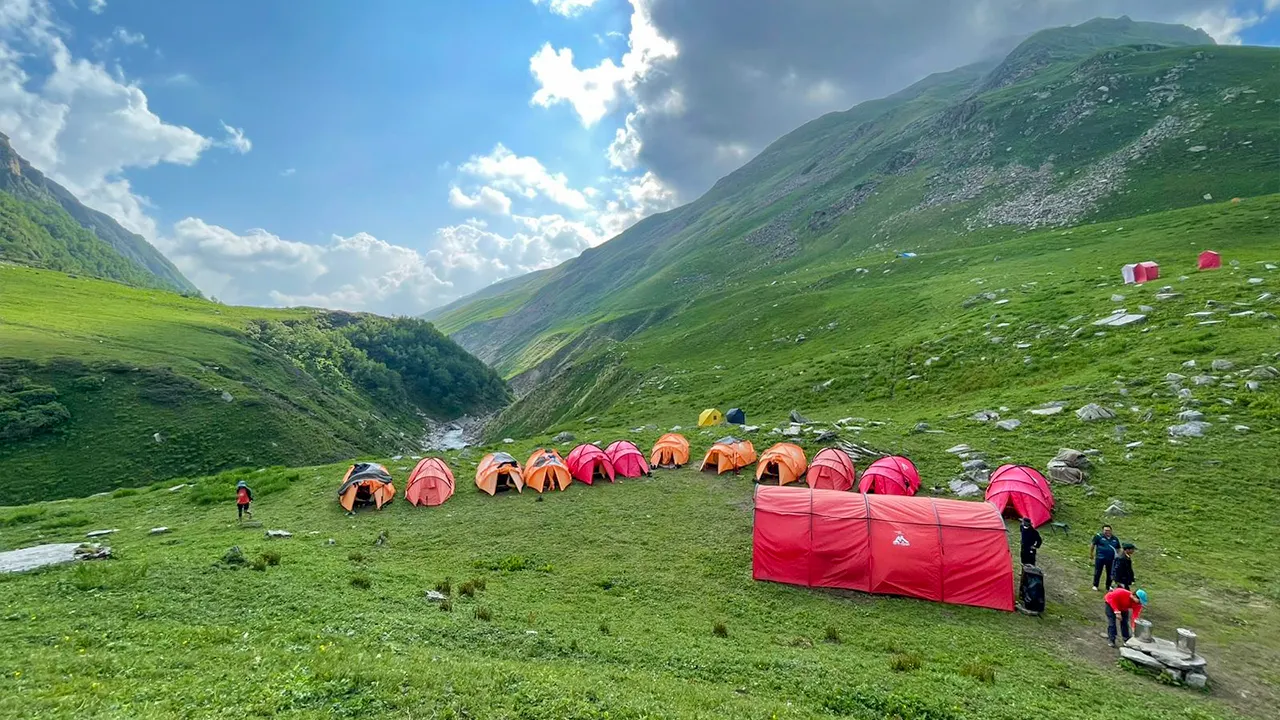
Best Himalayan Treks for Beginners
Every trekking enthusiast wishes to trek, experience the beauty of the Himalaya peaks, and this can be achieved only after gaining a certain amount of experience and survival skills. But that doesn’t mean that you can’t experience the eternal beauty of nature, especially as a first timer.
So, as a first timer, you can choose some easy, beginner-friendly treks as they will be safe, comfortable, and you can experience scenic beauty without going through too much trouble.
Here are some of the best beginner-friendly Himalayan treks:
- Nag Tibba Weekend Trek
- Chopta Chandrashila Trek
- Dayara Bugyal Trek
- Valley of Flowers Trek
- Har Ki Dun Trek
Tips for First-Time Trekkers
Embarking on your first trek, which too in the Himalayas, seems to be an exciting and life-changing experience. To experience such a life-changing moment, proper preparation is necessary. Packing all the essentials that will ensure your safety and make your journey memorable is mandatory.
Therefore, here are some essential tips for every beginner that will help you trek through the Himalayas smoothly and confidently.
Physical Preparation & Fitness Routine
It doesn’t matter if you are trekking through a difficult Himalayan trek or an easy one. Every trek demands a good amount of stamina. Start doing exercises like jogging, stair climbing, or cycling to build your core strength and stamina.
A solid fitness routine will help you endure long trails and uneven trails without any exhaustion. So, here are the complete fitness tips you can go through and follow as per the grade of your chosen trek.
Fitness Tips As Per the Grade of the Trek
The routine to keep your body fit and completely healthy to go trekking purely depends on the range of your trek. Every different range of treks demands different levels of body fitness from a trekker. Ranges of the treks are easy, easy to moderate, moderate, moderate to difficult, difficult, and lastly challenging.
- Easy Range Treks - For the easy range of trek, the trekkers are advised not to put too much pressure on their bodies. Firstly, every trekker should start focusing on their fitness three months before going on the trek. Secondly, a few exercises that are a must-do for trekkers are - Uphill training, Push-Up, Squat on Day 1,3 & 5, then Jogging, Cycling & Crunches on Day 2,4 & 6. To know more about the ratio of the exercise as well as the duration, you can check the chart given below.
- Moderate Range Treks and Difficult Range Treks - As compared to the easy range trek, the moderate trek, as well as the difficult range treks, require the trekkers to work on their fitness more. All the exercises from Push-Up, Squat on Day 1,3 & 5, to Jogging, Cycling & Crunches on Day 2,4 & 6 remain the same. But the ratio as well as the set of exercises increases and differs from each other. To know more about the ratio of the exercise as well as the duration, you can check the chart of both ranges of treks.
Packing Essentials
The best tip for every beginner trekker is that they should pack smartly. Always pack smartly and lightly rather than just carrying all the gear, even if they are unnecessary.
- So, always invest in sturdy, waterproof trekking shoes with good grip.
- For trekking, carry layered clothing like thermal wear, fleece jackets, and a waterproof jacket for the rapidly changing mountain weather.
- Don’t forget to carry gear like- headlamp, a reusable water bottle, trekking poles, sunscreen, and a first-aid kit.
Just remember that the right gear will always help you stay comfortable and safe on the trail while trekking for the first time in your life.
COMPLETE PACKING LIST
| PACKING LIST ESSENTIAL | ||||
| BASIC GEAR | CLOTHES | HEAD GEARS | FOOT GEARS | PERSONAL UTILITIES |
| Backpack with rain cover | T-Shirt (Synthetic quick dry) | Head torch | Trekking shoes | Sunscreen |
| Day pack with rain cover | Fleece T-shirt | Sun Cap | Floaters/flip-flops | Moisturiser |
| Walking stick | Wind stopper / Fleece jacket | Woolen cap | Cotton socks | Chapstick / Lip balm |
| Water Bottle / Hydration pack | Windproof Jacket | Balaclava | Woollen socks | Toothbrush and toothpaste |
| Small-sized tiffin/lunch box | Down feather / Hollow jacket | Buff / Neck-gaiters | Gaiters | Toilet paper & Wipes |
| Snacks | Thermal inner (Upper and Lower) | Sunglasses | Micro spikes | Soap/hand sanitizers |
| Personal Medical Kit | Trek Pant (Synthetic quick dry) | Antibacterial powder | ||
| Wind stopper / Fleece Pant | Quick-dry towel | |||
| Waterproof gloves | ||||
The above-mentioned packing list can vary according to the season you choose to go on a little voyage to experience the beauty of the Himalayas. To know more about your packing essentials, after booking your trekking journey with us. You can contact your trek coordinator to get your hands on the complete list of packing essentials according to that particular season.
Guided Trek vs. Solo Trek
For your first trekking experience, always choose a guided trek to experience trekking for the first time. In fact, several reputable trekking companies handle the permits, accommodations, and safety facilities to help you make your journey smooth, comfortable, and enjoyable.
As for solo trekking, it does offer freedom, but it demands skills that come with experience only. Therefore, solo trekking is not for a beginner. Beginners will find guided groups more reassuring, especially on remote Himalayan trails.
Altitude Morning Sickness
Every best beginner trek in the Himalayas involves high altitudes, where a drop in the oxygen level is absolutely normal. So, to keep your health in check and not get sick. The best tip for every new trekker is that they should drink plenty of water, avoid alcohol, and while trekking, they should never ignore warning signs. If symptoms worsen, then without any second thought, descend immediately and seek medical help.
Conclusion
Choosing your first Himalayan trek is so much more than just picking up a trekking location that offers a breathtaking view of the Himalayas. It is also about your trekking destination, checking the boxes like - suitable according to your fitness, your interest levels, and how comfortable the trail is.
It doesn’t matter if you are a first-time trekker or an experienced trekker; there are certain things that you will always be required to consider before selecting your chosen trekking destination, such as altitude, duration, fitness, region, and the best season to travel to that trekking location. So, as a beginner, start with treks that are known for their scenic beauty and have easy trails. So that while being on your first trek, rather than worrying about the difficulty in climbing, you can solely focus on enjoying the experience.
Whether you pick from the many easy Himalayan treks for beginners or gradually aim for more challenging peaks, the key to having a smooth trek is to start your journey smartly and enjoy every step of your mountain adventure.
FAQs
Which season is best for a beginner’s Himalayan trek?
For beginners, the best season to start trekking is Spring (April–June) and post-monsoon autumn (September–November) as it offers pleasant weather, clear views, and safer trail conditions.
What are some of the most famous beginner-friendly Himalayan treks?
Some popular, famous beginner-friendly Himalayan treks are- Nag Tibba Weekend, Chopta Chandrashila Trek, Dayara Bugyal, and Kareri Lake Trek.
What factors should I consider before choosing my first Himalayan trek?
The main factors that every beginner trekker should always consider are: check your fitness level, trekking duration, altitude, season, and the difficulty level of the trek before deciding.
What is the ideal duration for a first trek in the Himalayas?
The ideal duration of a trek for a beginner is 3–5 days, as it allows you to enjoy the mountains without exhausting yourself.
What kind of gear or preparation do I need?
Basic trekking shoes, layered clothing, a backpack, a water bottle, and all the required personal essentials will be enough to go on a short-duration trek.
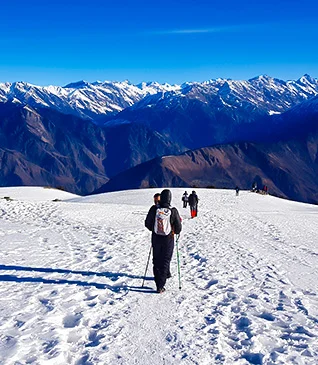
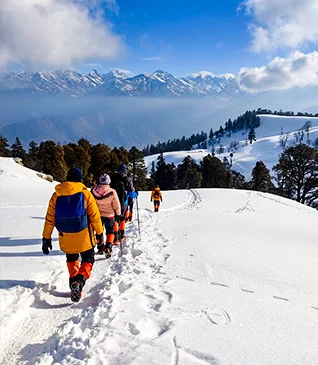
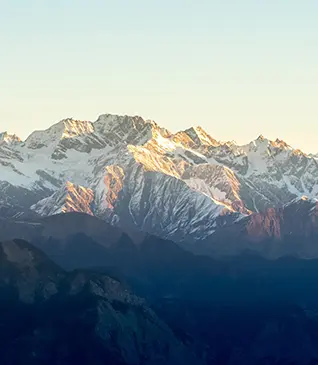
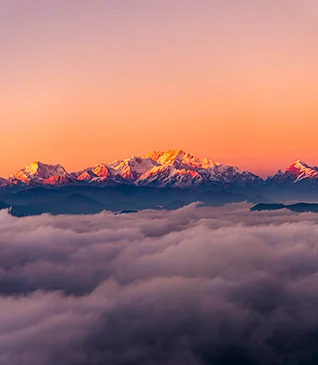

.webp)
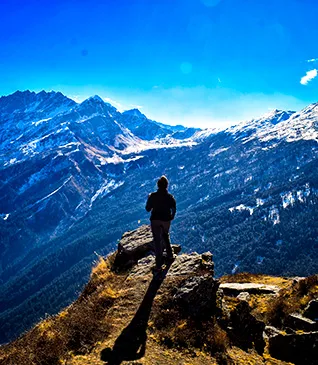
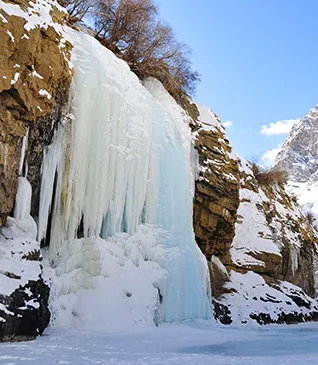
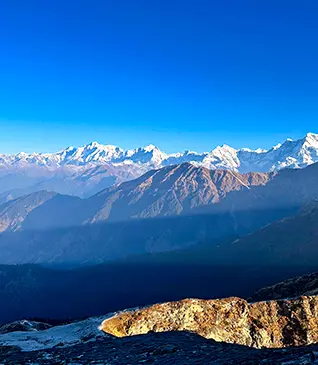

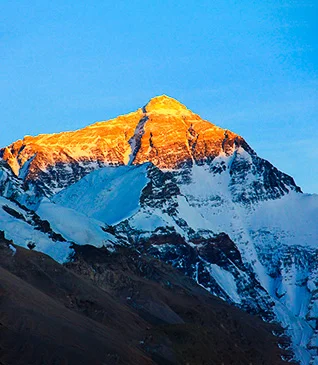
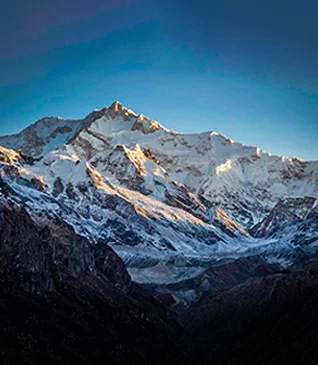
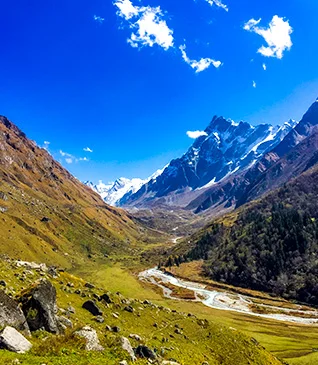
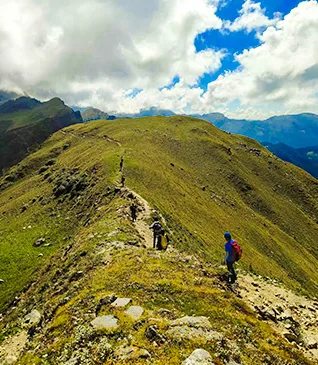
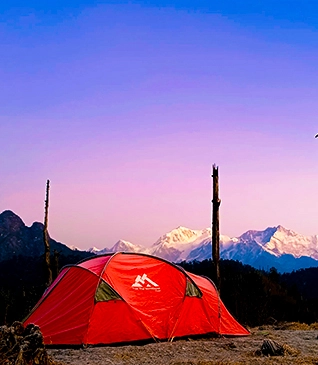
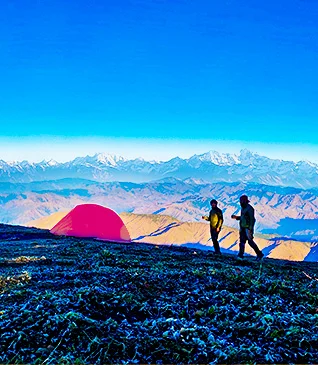
.webp)
